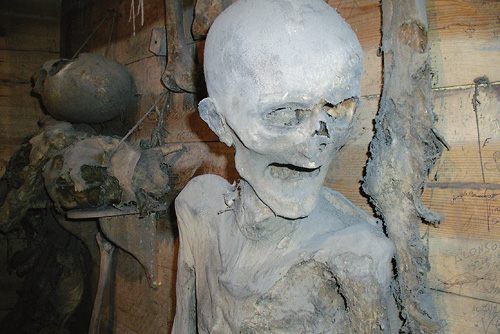Collégiale de Saint-Bonnet-Le-Château
Natural mummies hidden in the crypt of a medieval French church.
Atop a hill in the picturesque town of Saint-Bonnet-le-Château stands the Collegiate Church of Saint-Bonnet, a beautiful medieval church believed to have been built in the year 1400.
The church contains a number of valuable collections including a library, a collection of ancient religious ornaments, and numerous murals from the 1400-1500s, but it wasn’t until 1837 that they realized they had a treasure they hadn’t even known about.
Despite being in a beautiful location, the church and town has seen quite a bit of turmoil. Surviving both the Hundred Years War, and the plague (said to be saved by the eponymous St. Bonnet) but the town saw perhaps its worst scourge from a single man, the Baron of Adrets. A Protestant leader, in 1562 the Baron seized the city and began a systematic campaign of burning, pillaging, arson and murder, leaving a trail of bodies behind. Many of these bodies ended up in the basement of the Collegiate Church of Saint-Bonnet, where they were subject to disaster once again during the Revolution of 1789, when most of the church tombs were pillaged and the bodies destroyed.
The church assumed it had lost its collection of murdered nobles, but as it turns out they were wrong. During rehabilitation work in 1837, one of the 22 vaults under the flagstones of the collegiate church was opened up. Beneath it thirty well preserved corpses were uncovered. Though treated by the church as a small miracle, it is believed that the bodies excellent state of preservation was due to the presence of alum and arsenic in the ground.
Dated from the 1400s-1500s, their cause of death remains a mystery and while it is possible they were victims of the plague or the War of religion, (some say they were buried alive, though this is almost certainly untrue) the current favored idea is that they were a family of nobles (evident from some cloth left on the bodies) murdered by the Baron of Adrets.
















Follow us on Twitter to get the latest on the world's hidden wonders.
Like us on Facebook to get the latest on the world's hidden wonders.
Follow us on Twitter Like us on Facebook